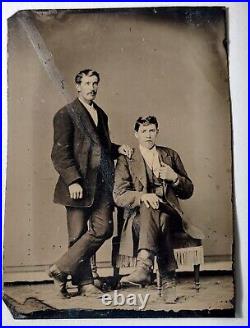
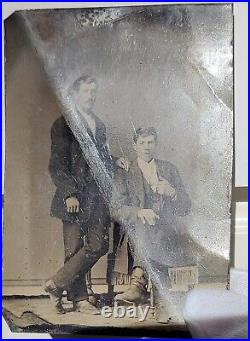
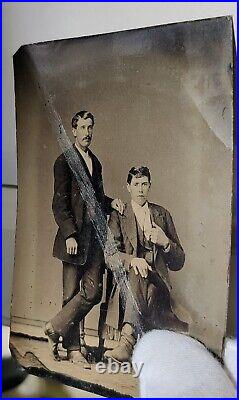
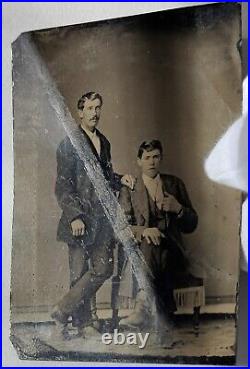
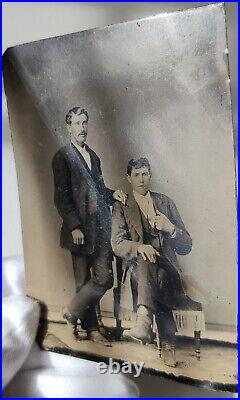
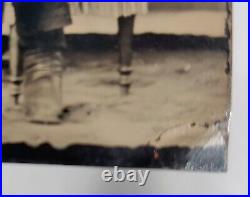
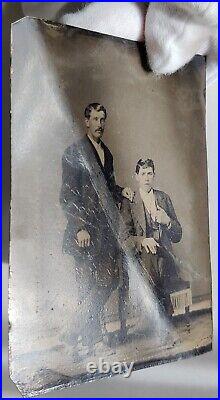
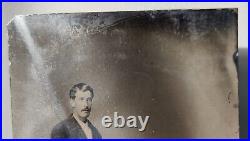
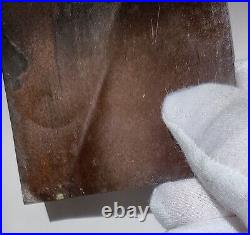
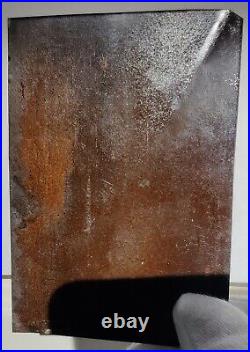
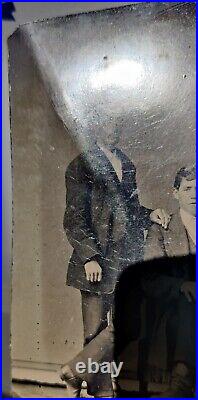
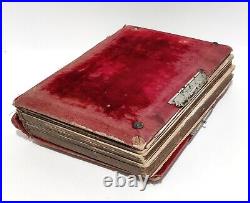
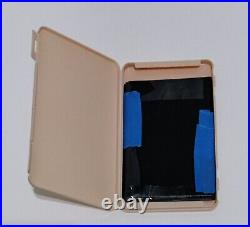
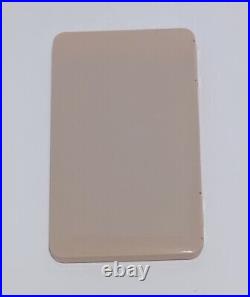

This looks like it could be a photo of a father and his son. Ferrotype was one of the earliest techniques used for photography. Because of how the photograph was created (involving a dark space, a plate, and chemistry), no negatives of the image were created to make copies from, so each tintype is completely unique! The negative was made out of a thin sheet of iron (not tin as the name implies) and coated with an opaque black or chocolate-brown lacquer or enamel. This is an authentic, tintype photo taken from an old family photo album I inherited. This photo was taken in the late 1800s or early 1900s. It’s interesting to see how much our clothing style has changed since that period of time. The photo album shown in the pics is NOT included in this sale. I only included it to help prove the authenticity of this photo. That album is where I pulled this photo from. This sale is for the photo only. The main photo for this listing is a pretty accurate representation of the photo. Most of the imperfections (including the smaller creases in the tin) are hard to see when viewing the photo head-on. It’s only when you start moving the photo around and letting the light hit it at different angles that you’ll really notice most of the imperfections. I tried my best to capture these imperfections. The photo has not been cleaned at all. What you see is how it has looked for decades. It has rough edges from the metal shears used for cutting. As you look at the pics (and when you view it yourself), you’ll see signs of age and wear, smudges, scratches, scuffs, spots, nicks and small creases in the tin. These “imperfections” are what give tintype photos their unique beauty. When you hold a tintype in your hand and look at it, you’re looking back in time. Tintypes were popular because they were strong and could be carried in a pocket, especially during the American Civil War. Size: approximately 2 7/8″ x 4″. (O448 – internal use only).
